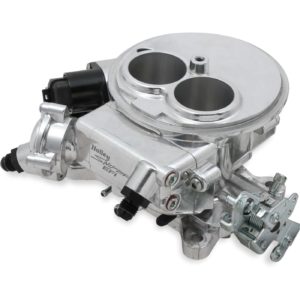Unibody and body-on-frame are two common types of vehicle frames. Unibody vehicles make up a majority of modern passenger cars, but body-on-frame vehicles still have their place on and off the road. Let’s take a look at what differentiates these frames and what factors you might want to consider when picking between them.
What Is Body-on-Frame?
Body-on-frame vehicles are built by mounting and securing their main body onto a rolling chassis. A variety of designs fall under the body-on-frame category, such as x-frames, perimeter frames, and space frames. Ladder frames, which are named for the crossbars that connect their dual side beams, are the most common. The body-on-frame design predates the unibody, and they’re typically made to be more suited to tough terrain and circumstances. This configuration is desirable for heavier work.
What Is a Unibody Frame?

Unibody vehicles are the more common of the two frame types. You’ll find that the vehicle’s floorboards, body, and major elements of its chassis are all joined into a single structure. Safety features are easily integrated into unibody frames, which are praised for providing improved driving dynamics. Again, there are a number of designs that fall into the unibody category, with the most common being monocoque. You’ll typically find that most modern hatchbacks, station wagons, minivans, and sedans use a unibody frame.
Unibody frames are also somewhat self-explanatory. The name is a shortened form of “unit body” or “unitized body.” The vehicle’s body, its floorboards, and all major elements for chassis structural support and crash-protection are joined into a single cohesive structure. The frame and the body are attached, and the two support the vehicle as one.
Unibody vs. Body-On-Frame Features
Naturally, the two frame types come with their own benefits and drawbacks. Let’s take a look at a few features to see which of the two comes out on top in the different categories.
Performance on Different Roads
Unibody and body-on-frame vehicles each shine on different types of roads. You’ll often find that unibody vehicles offer a sportier performance on concrete and asphalt, providing better control around the corners and a more comfortable lift for the driver and passengers.
However, when it comes to off-roading, body-on-frame vehicles are much better. A lot of trucks and off-road SUVs have body-on-frame builds because they allow for larger amounts of “flex.” This means that the vehicle can more easily be driven over uneven surfaces and terrain without damage. Frame warping while off-roading is also much less of an issue in body-on-frame vehicles because they aren’t made of a single unit like unibodies.

Production and Repair Costs
The production and repair costs of body-on-frame vehicles are typically lower than your usual unibody vehicle. This is mainly due to their components being easy to work on and replace. On the other hand, because unibodies are more complex, their development and production costs are much higher. In addition, because the body and frame on unibodies are so integrated, repair costs are higher since body shops have a lot more to fix after an accident.
Safety
In terms of safety, unibody vehicles take the lead. Unibody frames are light and designed to absorb force in case of a crash. This is why they crumple more easily, to soften the blow for the vehicle’s occupants.
Body-on-frame vehicles, on the other hand, withstand the impact from collisions instead of absorbing it. This is where their resilience to frame damage comes in. Thanks to their sturdy construction, body-on-frame vehicles can withstand a lot of force before their frames bend. This isn’t always a good thing, however, because if the force from an accident isn’t absorbed by the vehicle’s body, it might reach the passengers and driver instead.
Fuel Economy and Weight
Because they tend to be lighter, unibody vehicles usually have better fuel economy. Body-on-frame vehicles are often heavier and thus use up more fuel.
Towing Capacity
If you’re looking for a vehicle with a high towing capacity, chances are you’re better off with a body-on-frame. This type of frame is extra strong and can handle heavy loads while staying safe and stable. Body-on-frame SUVs typically have a higher gross vehicle weight rating (GVWR) and are perfect for hauling boats and campers. That isn’t to say unibody vehicles can’t tow. A unibody Ford Explorer can haul about 5,600 pounds, after all. But it’s still less than, say, a body-on-frame Chevrolet Suburban, which can handle trailers of up to 7,800 pounds.
Overall, each frame design has its pros and cons, and you’ll need to pick the one that fits your needs. The general rule of thumb is that if you’re looking for a vehicle to haul your trailer or boat one weekend and off-road on another, get yourself a body-on-frame. On the other hand, if you want a more comfortable cruiser that’s good on an everyday road, a unibody vehicle might be best for you.
Any information provided on this Website is for informational purposes only and is not intended to replace consultation with a professional mechanic. The accuracy and timeliness of the information may change from the time of publication.
































Potential B-O-F purchase. Great explanation of the differences of the frame types. Do yall feel that a Toyota 4Runner is not a safe vehicle? The IIHS says that the body cage is poor, so that concerns when considering the vehicle. I have done a little research but not finding much on death rates or negative safety issues other than the tech has not changed since 2014 or so. But they sell! Appreciate any comments.